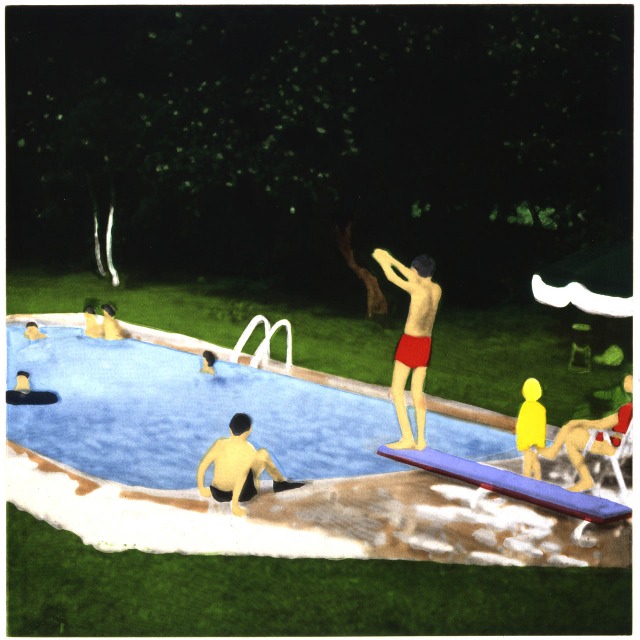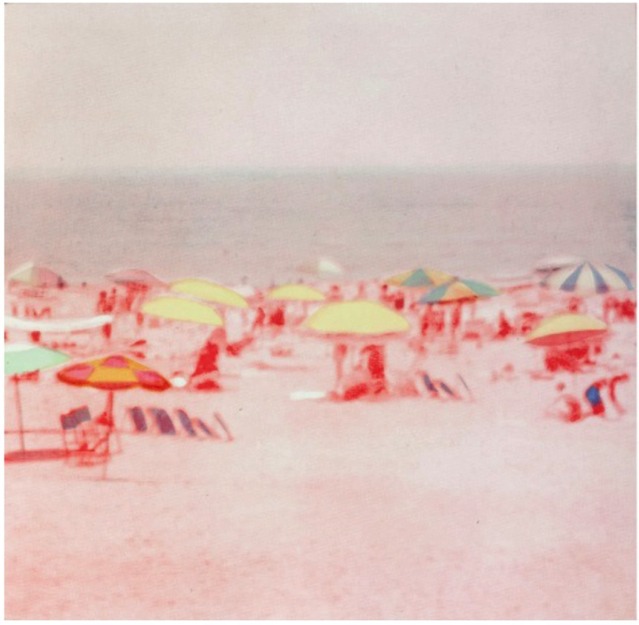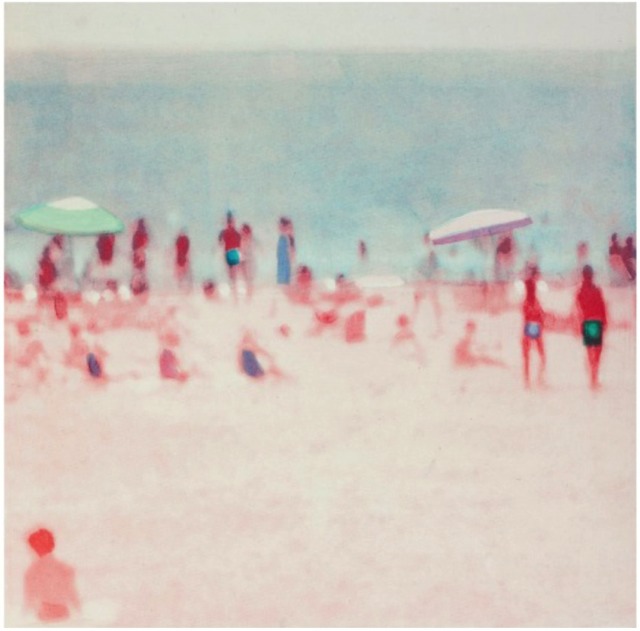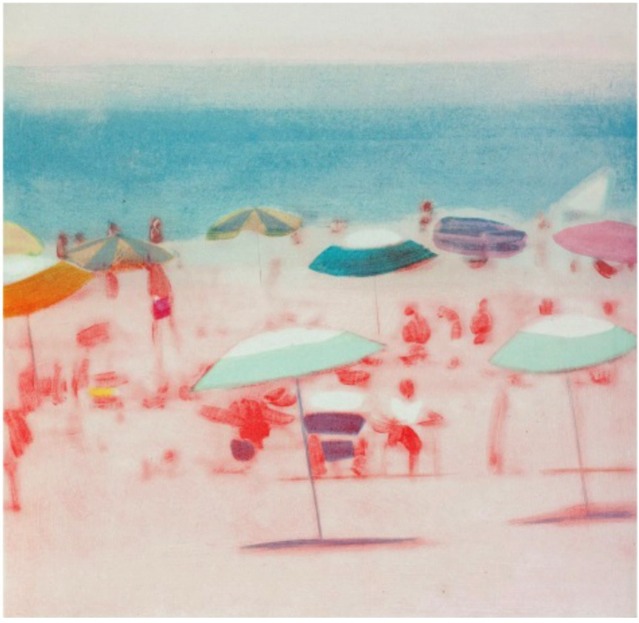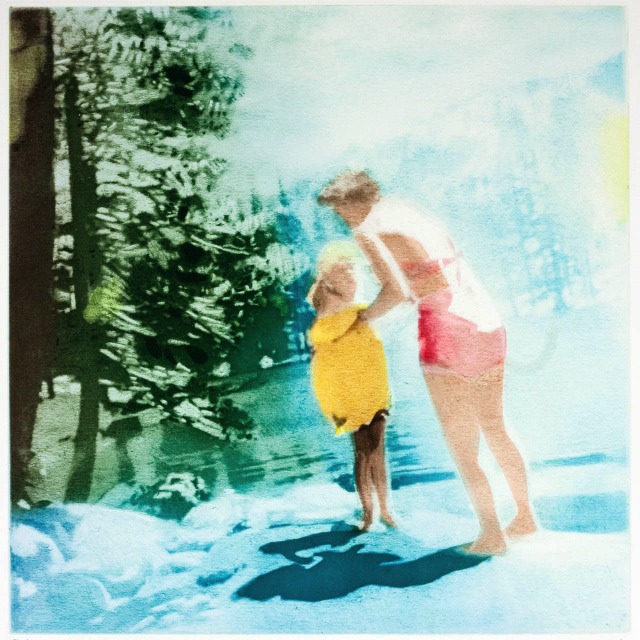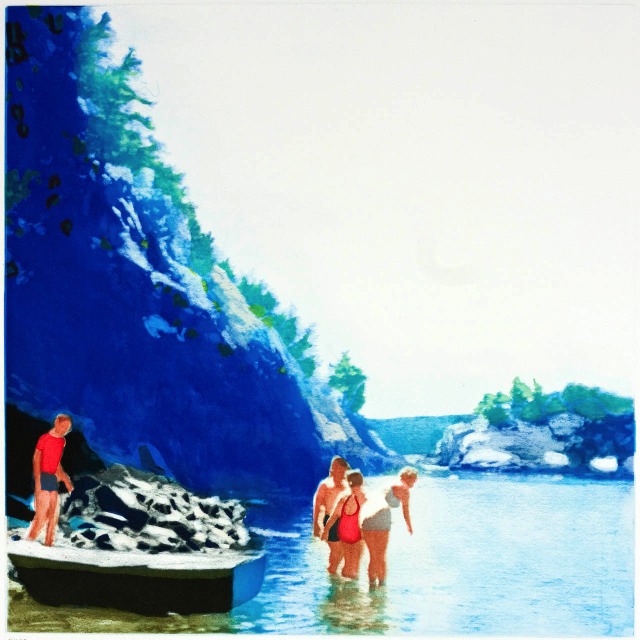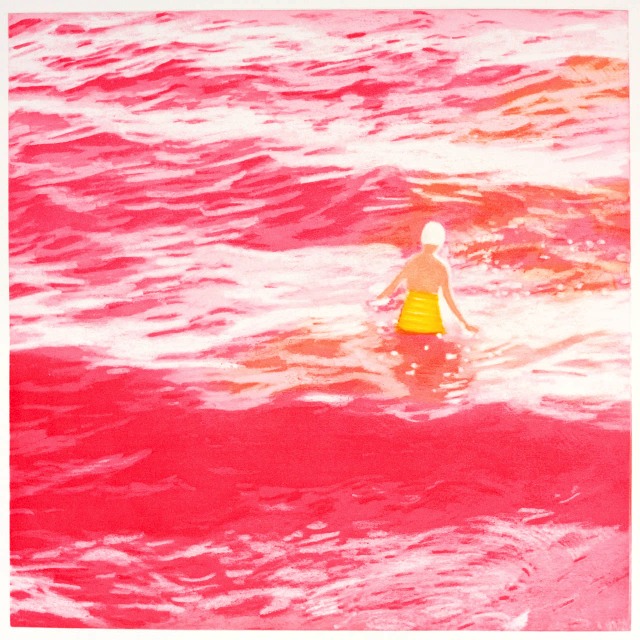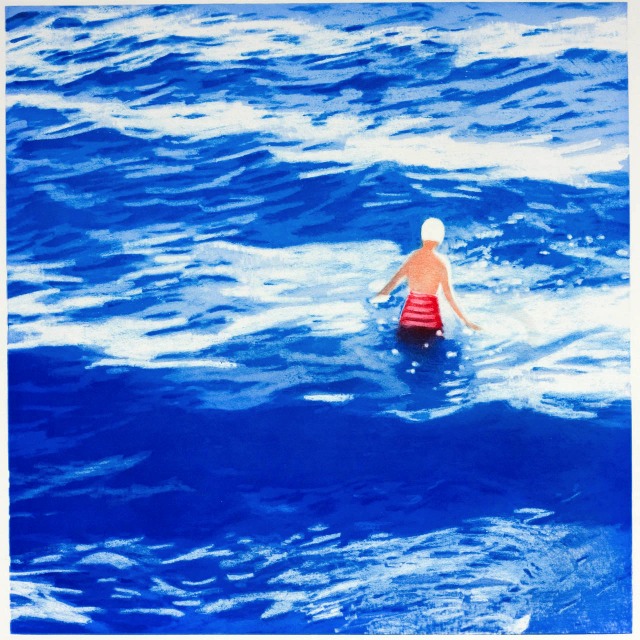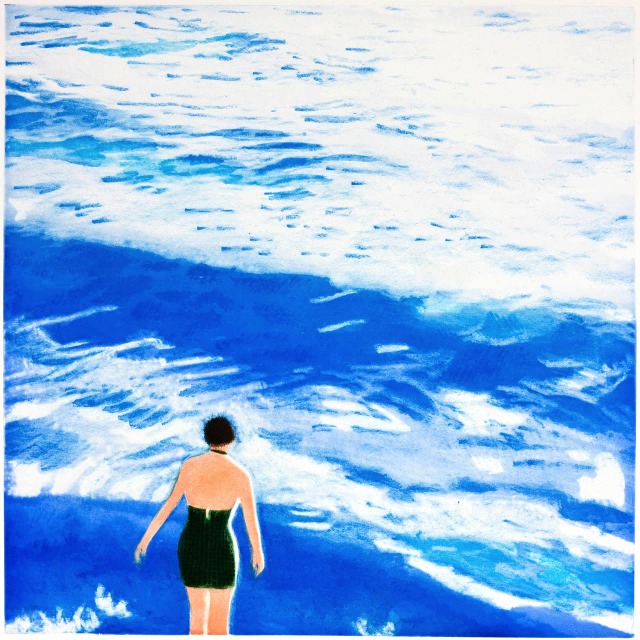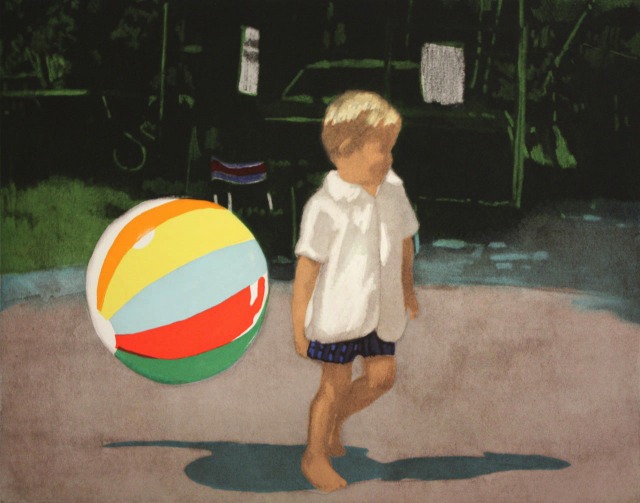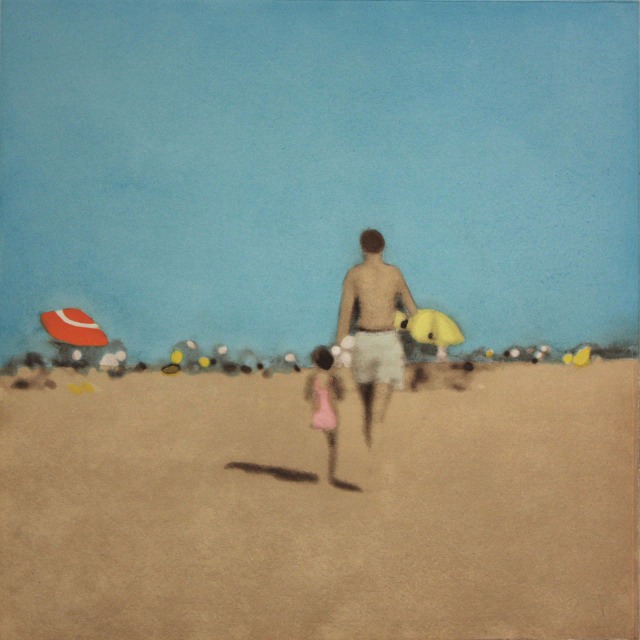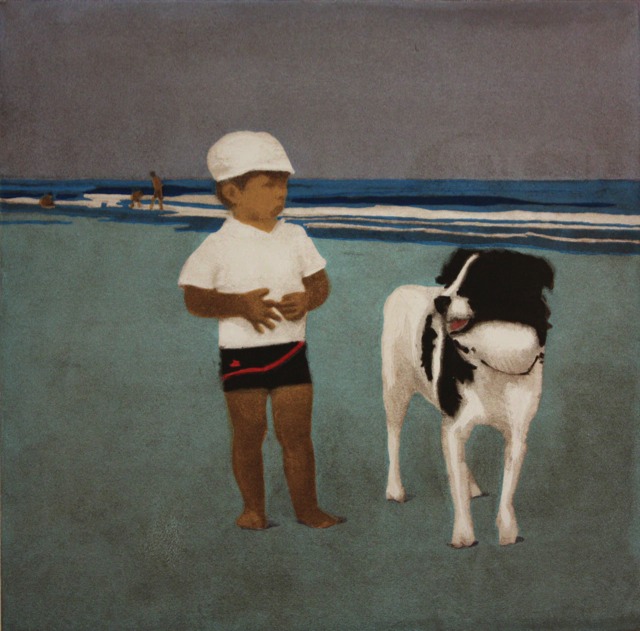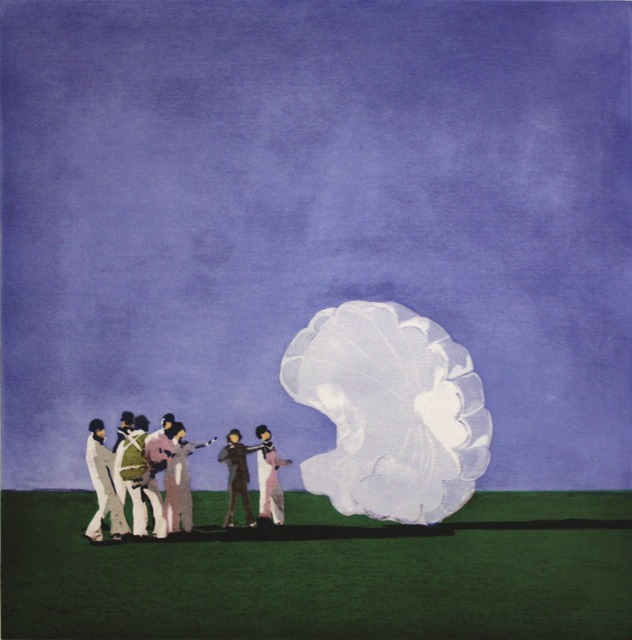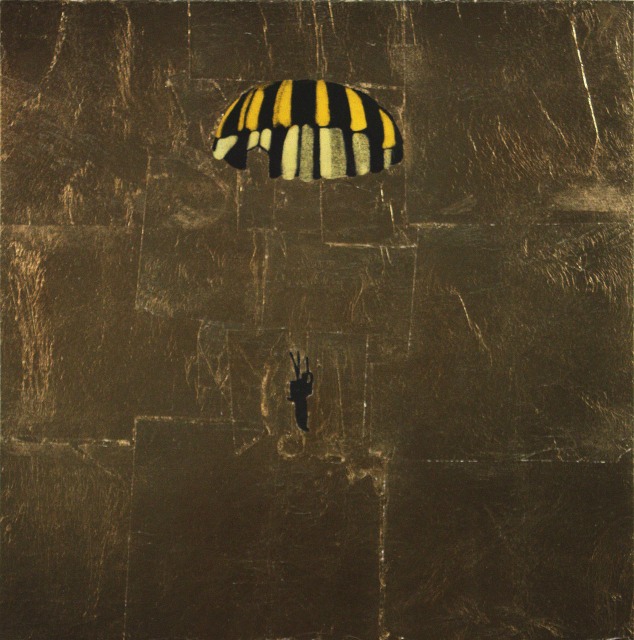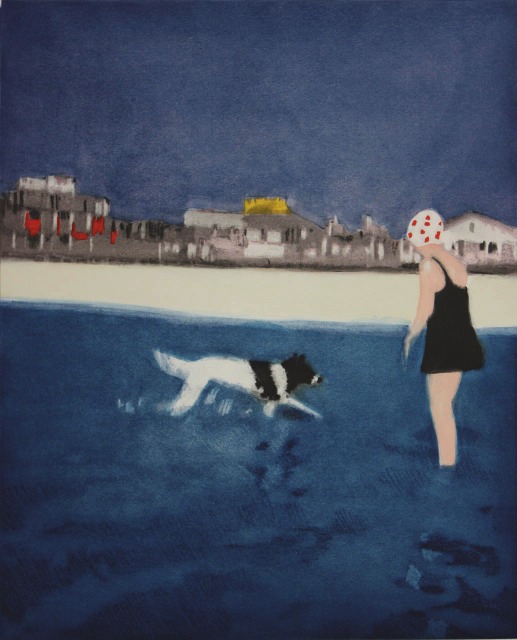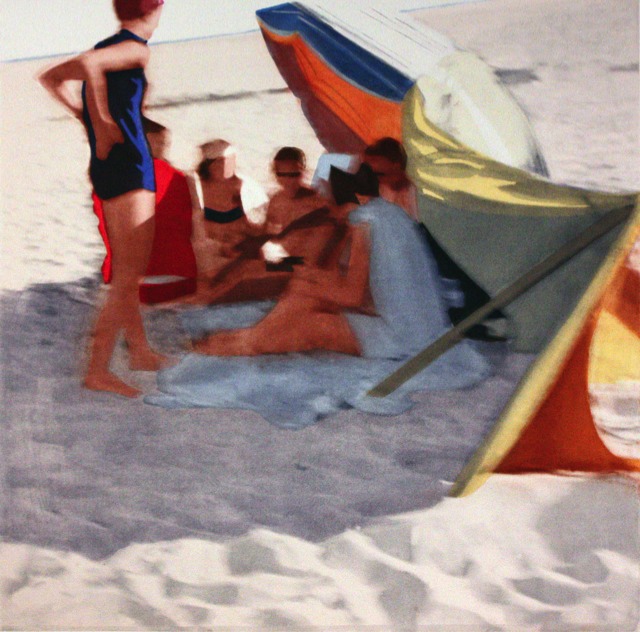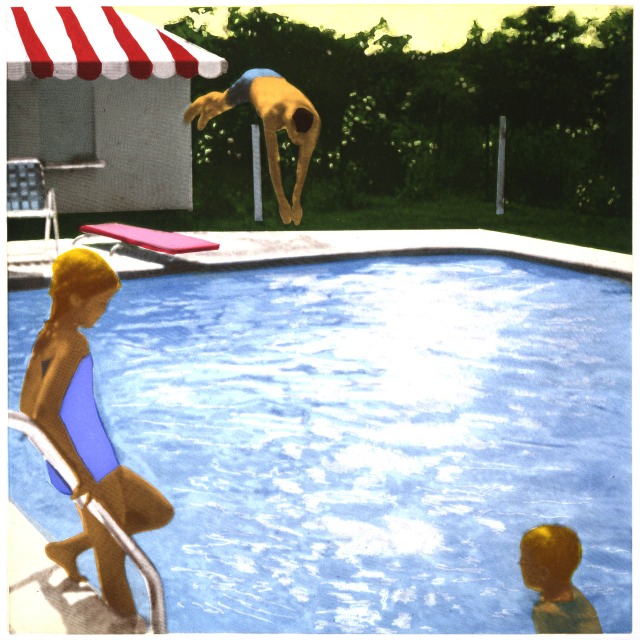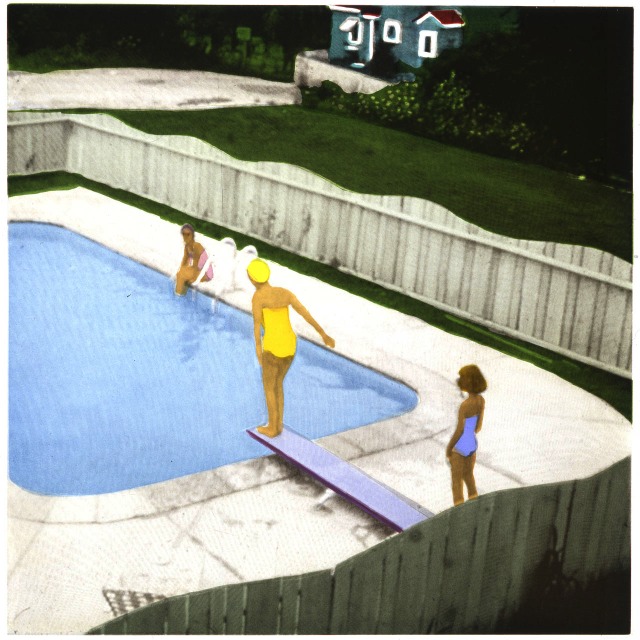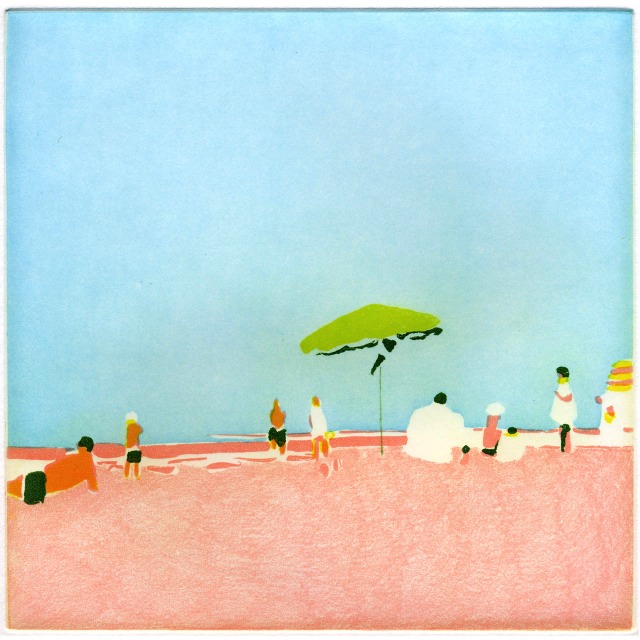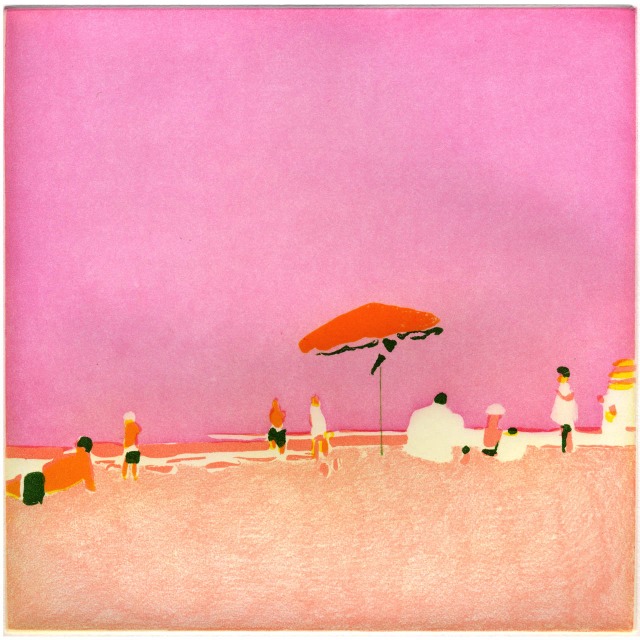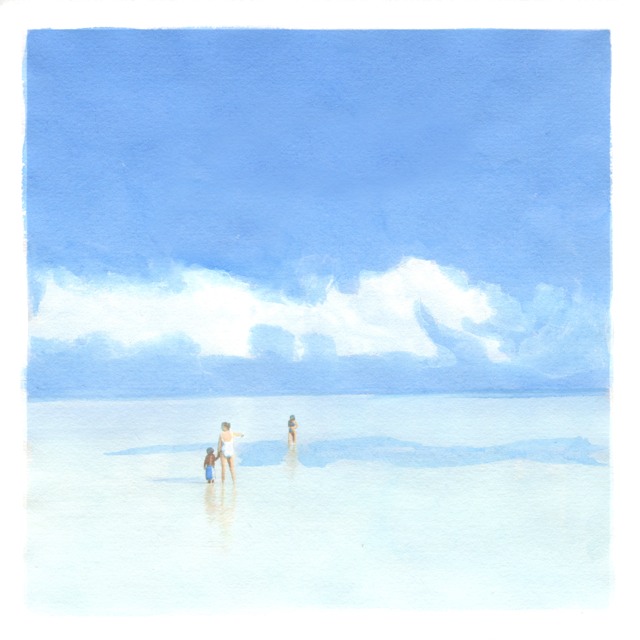Red Suit Diver
2006
Color aquatint etching
Somerset velvet white paper
Image size 21″ x 21″
Paper size 32″ x 31¼”
Edition of 50
Artist Isca Greenfield-Sanders collects and reworks photographs as part of her process. She uses images found in discarded family photo collections, selecting the part of each image that contains the most intriguing formal properties. Using modern technologies, she transfers the photographic image onto rice paper so it can serve as the foundation for a painting. At Paulson Press, she worked with a photographic key plate to achieve the same purpose with her prints. Ultimately, Greenfield-Sanders obliterates the actual photo image with paints and inks to uncover the found images’ essential meaning and beauty.
[read more=”Click here to Read More” less=”Read Less”]
“The Swimming Pool Etchings” combine centuries old techniques of painting and intaglio printing with late 20th-century photography and 21st century photo scanning and retouching technology. The resulting four etchings are both inventive and beautiful. Greenfield-Sanders looks for an image that furthers the dialog between photography and painting. In this series, she replaces many of the details in the images, such as awnings, lawn chairs, and swimming suits, with bold color. Her interest is in the image’s formal characteristics. In many ways, she is both painter and editor: first culling an archive, and then refining the chosen photograph. This refining is best seen in the print “Blue Suit Bather”. In this image, Greenfield-Sanders handworks the plate, amplifying the highlights in the pool, above which a youthful diver is suspended in mid-air. In “Yellow Suit Diver,” the window edges on the house have been made white by burnishing out the photographic dots. The angle of the photo, from an upper window, suggests voyeurism but it is the triangular composition that appeals to Greenfield-Sanders more than an imposed narrative. In “Red Suit Diver,” the pool scene appears to be in the middle of a forest, rather than the typically sunny locale associated with pools and summer leisure. The spit bite in the dark trees gives the piece a painterly feel. There exists a tension between playfulness and ominousness. “Green Suit Diver” depicts a solitary female figure placed in the center of the composition surrounded by yellow morning light. Her tranquil pose on the edge of the pool emanates calm. We spoke with her as she was making the series of prints in the Paulson Press studio.
Q: Where do you get the images you use in your work?
Isca Greenfield-Sanders: I am always on the hunt for interesting 35mm slides from the 1960s. I scavenge garage sales, junk shops and purchase lots on eBay. I buy hundreds of images and put on slide shows in my studio. Recently I started going through an archive that is very difficult- it’s a son being sent off to Vietnam. The last image is a fuzzy bad picture of a Pan Am airplane – the slide is labeled “The plane Rocky took to Vietnam.”
Q: How do you deal with this stuff that is so full of emotion?
IGS: I’ve struggled with being able to use that image. I force myself to think about what makes that picture interesting except the title and the obvious story. The archives I buy are full of emotional treasures, but most of them won’t make good paintings.
Q: Is it important that the basic image has been forgotten or discarded?
IGS: No. A great image is a great image – I just happen to be getting them through the trash. I suppose I feel no guilt in
appropriating an image that no one else wanted.
Q: Do you use the entire photograph or do you focus in on one part?
IGS: I almost never use the entire photograph. The cropping and framing is always my own. Sometimes I stitch together multiple photographs to make a composition. I am fictionalizing these found images in a similar way to when filmmakers say their work is “based on a true story”.
Q: What about the size of the image?
IGS: My large oil paintings are typically 56 inches or 63 inches square. I enjoy working on a single image at different sizes. A painting might work at 28 inches but be useless at 63 inches. It’s interesting to find that edge. How far can you go before an image disintegrates entirely?
Q: What are you working on at Paulson Press?
IGS: I am here in Berkeley working on a set of four swimming pool etchings. The original slides all came from one eBay purchase that I made last fall. Upon first viewing the images I was struck by their suburban “East coast” quality. I liked how nicely they contrasted with David Hockney’s swimming pool paintings which are so beautifully pristine and stylized. My swimming pool paintings include children, toys, fences and lawn furniture. The pools are nestled in dark forests.
Q: Has making etchings been similar to your painting process?
IGS: Yes. When making oil paintings, I begin with a 35mm slide, scan it, and make a pigment print onto rice paper. I work directly on that pigment print with watercolor and color pencils to both enhance and destroy the integrity of the image.
Q: How are you replicating that here?
IGS: Pam and Renee suggested that we begin by using a photographic key plate that acts as the pigment print does when I paint. With the key image in place I used spit bite, step-etching, scraping,and burnishing to disrupt and add to the composition.
Q: What interested you about this image? What is it called?
IGS: Blue Suit Bather for the girl in the left foreground – she is the most appealing figure. I chose this image because of the vantage point. The photographer had to be crouching down very low along the edge of the pool. Not something most amateur photographers would think to do. The figure group forms a triangle and the candy-striped awning is quite graphic. It was interesting to see how far I could collapse this image and still keep these lovely shapes.
Q: I can see the dot screen of the key plate in some of these, but the pool water itself looks disrupted. Can you talk more about that?
IGS: In the swimming pool etchings, as in all of my work, I am searching to find the point at which the image retains its photographic underpinnings but is removed enough from the photograph to be a meditation on color and form.
Q: There seems to be a tension between playfulness and ominousness in these images. Is that something you look for?
IGS: It is. I look through hundreds of slides before I hit upon one I want to work with…I find the odd and foreboding images most memorable. I always think how strange it was that the photographer chose to capture this moment!
Q: Do you imagine the narrative of these found images?
IGS: While this is a very tight series, I rarely make a show that has a story to it. I don’t have the mind for it. I work image by image and it’s based on the formal content of what I can push and pull. I’m trying to develop my instinct.
[/read]
